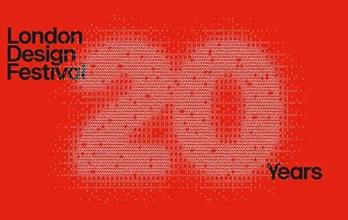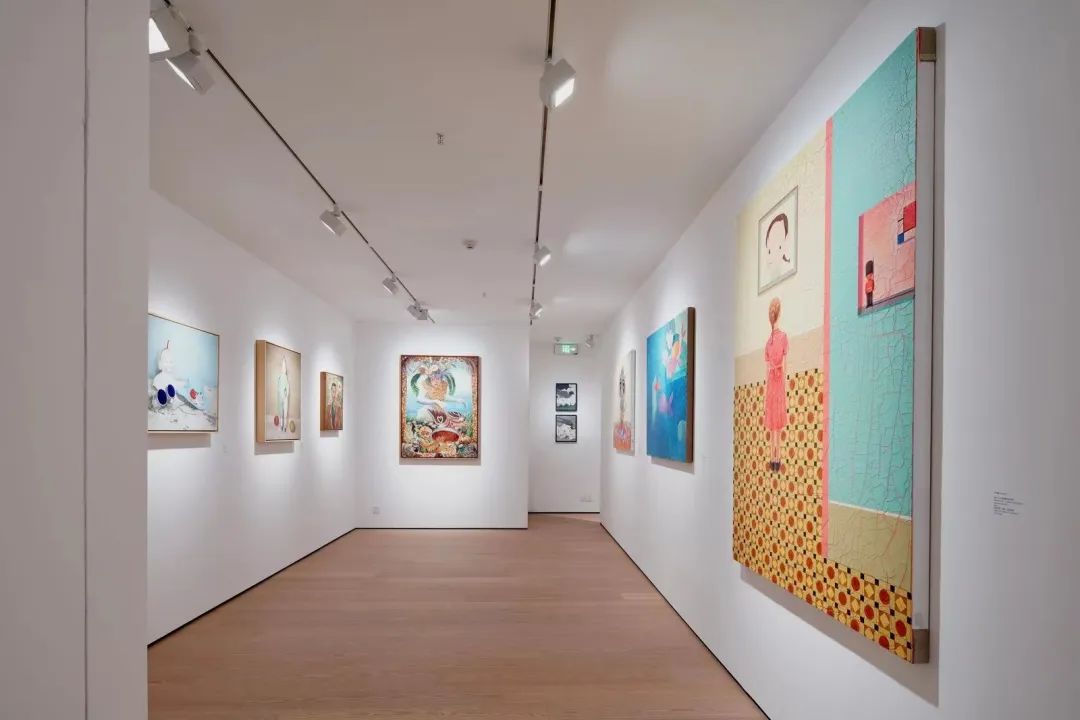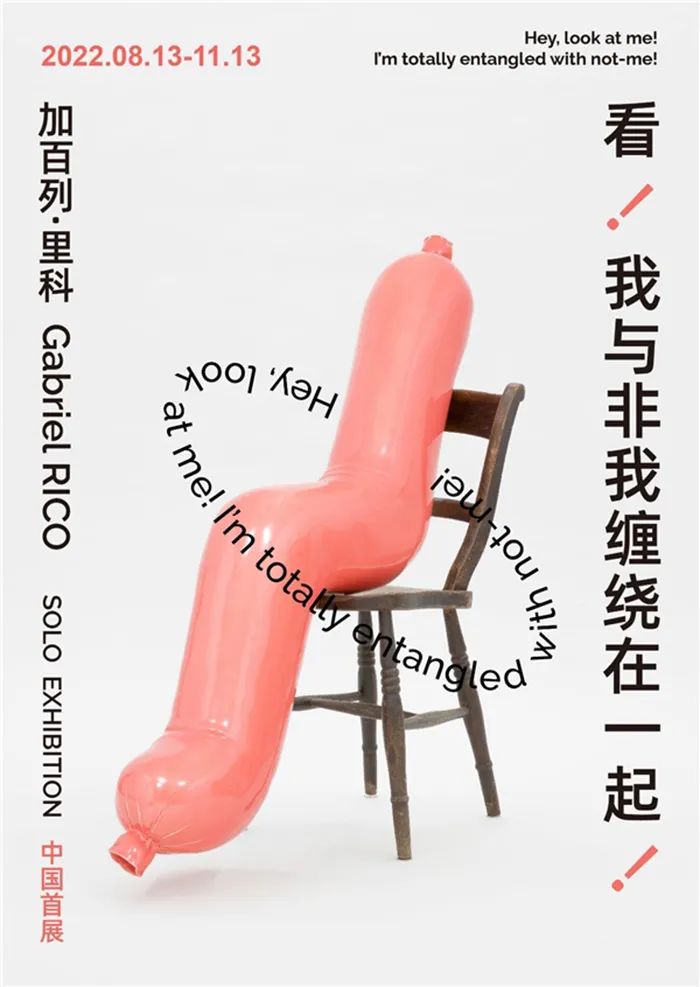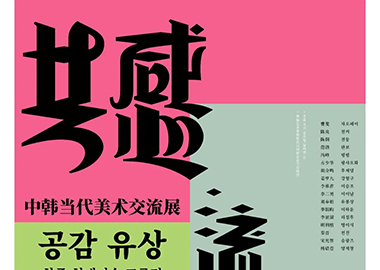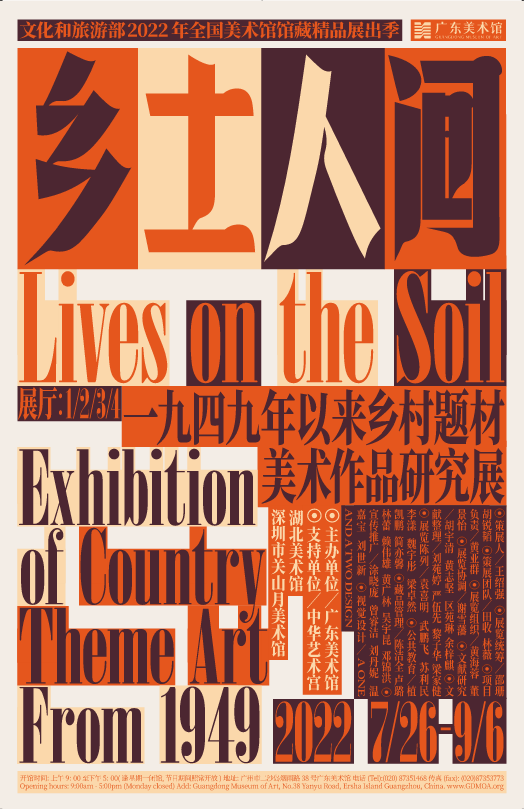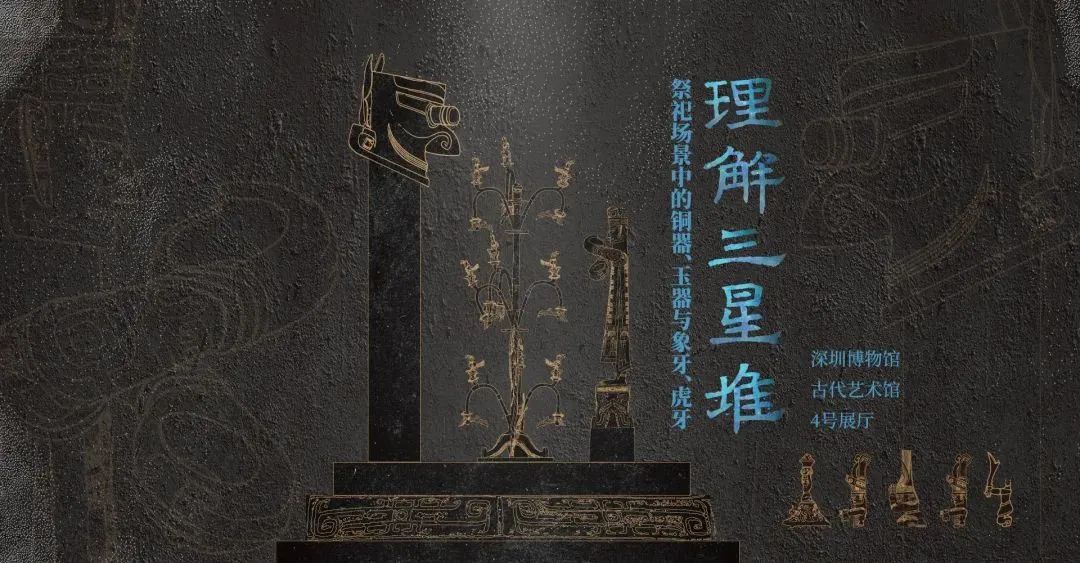窥探的兔子——李旭彬艺术个展
发布时间:2020-07-30
来源: 虹墙画廊


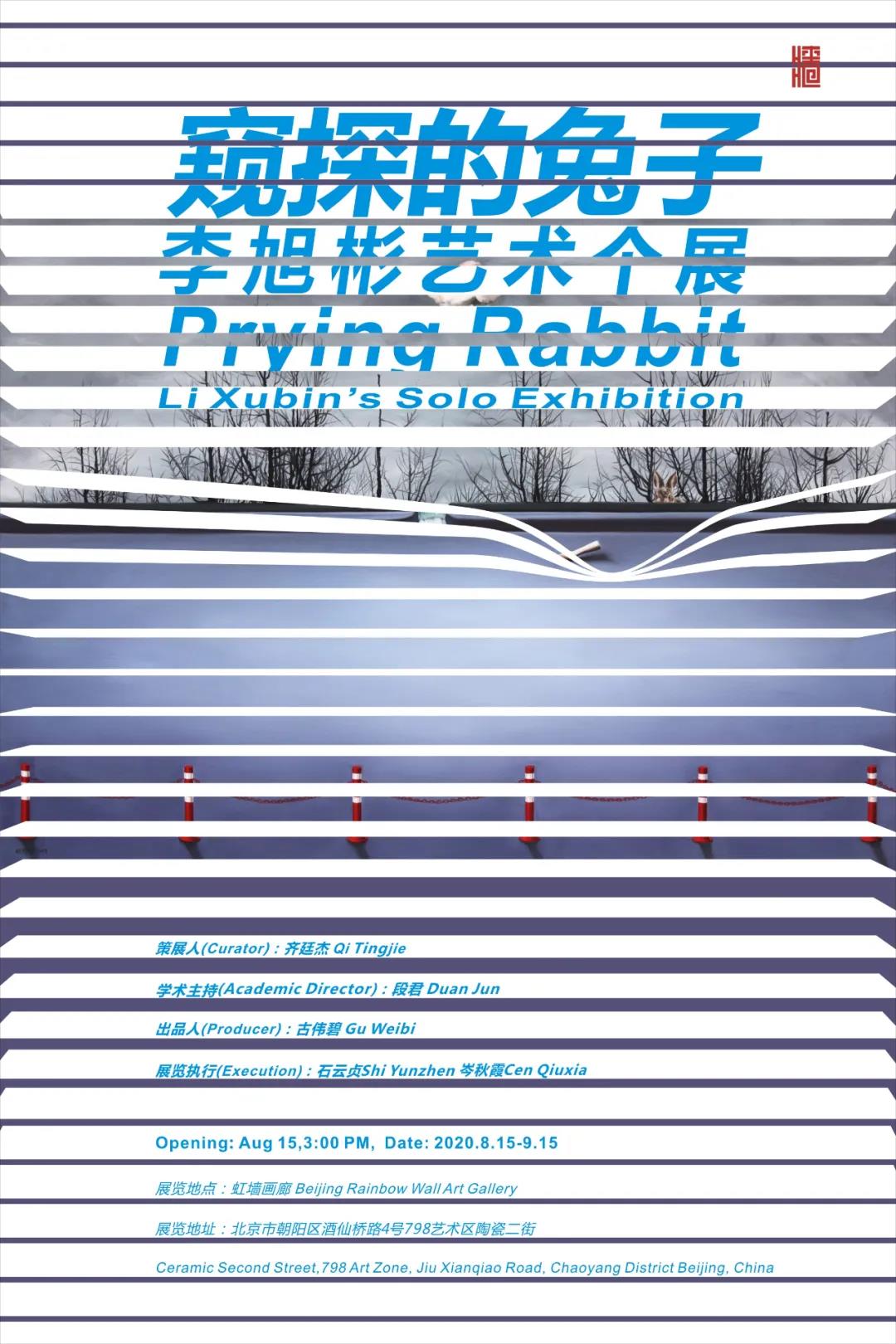
展览日期:2020.08.15-09.15
开幕式:2020.08.15 15:00
艺术家:李旭彬
出品人:古伟碧
策展人:齐廷杰
学术主持:段君
20世纪80年代初,李旭彬出生于汕头澄海农村的一个书香门第家庭。在李旭彬的记忆中,大海、农田、星空编织了他童年记忆的种种美好。与大多数人一样,“闲适、无忧”的乡村生活开启了李旭彬认知世界的生命篇章。初中毕业后,李旭彬离开家乡到大城市广州求学,先后考取广东艺术师范学校和广东工业大学艺术设计学院。彼时,经由改革开放,中国的城市化进程由受高度集中的计划体制制约的特征逐步转变为城市化全面推进阶段,越来越多的人离开乡村涌入城市。这种转变,体现在当代艺术上,正如批评家何桂彦所说,随着20世纪80年代末、90年代初社会转型,中国当代艺术的一个明显特征是,以都市文化的现代性逐步取代了乡土文化的现代性,所以,都市中国和都市人文成为当代艺术创作和多元文化取向的重要组成部分。
In the early 1980s, Li Xubin was born into a scholarly family in the countryside of Chenghai, Shantou. In Li Xubin's memory, the sea, the farmland, the starry sky weaves all sorts of beautiful memories of his childhood. Like most people, "leisurely, worry-free" rural life opened the chapter of Li Xubin's cognition of the world. After graduating from junior high school, Li Xubin left his hometown to study in Guangzhou, a big city, and was admitted to the Guangdong Art Normal School (Guangdong Teachers College of Foreign Language and Arts) and the School of Art and Design, GDUT. At that time, through the reform and opening-up, China's urbanization process from the characteristics of highly centralized planning system gradually changed into an all-round stage of urbanization, more and more people leave the countryside to enter the city. This transformation is reflected in contemporary art, as the critic He Guiyan said, with the social transformation in the late 1980s and early 1990s, an obvious feature of Chinese contemporary art is that the modernity of urban culture has gradually replaced the modernity of local culture, so urban China and urban humanities have become an important part of contemporary art creation and multi-cultural orientation.
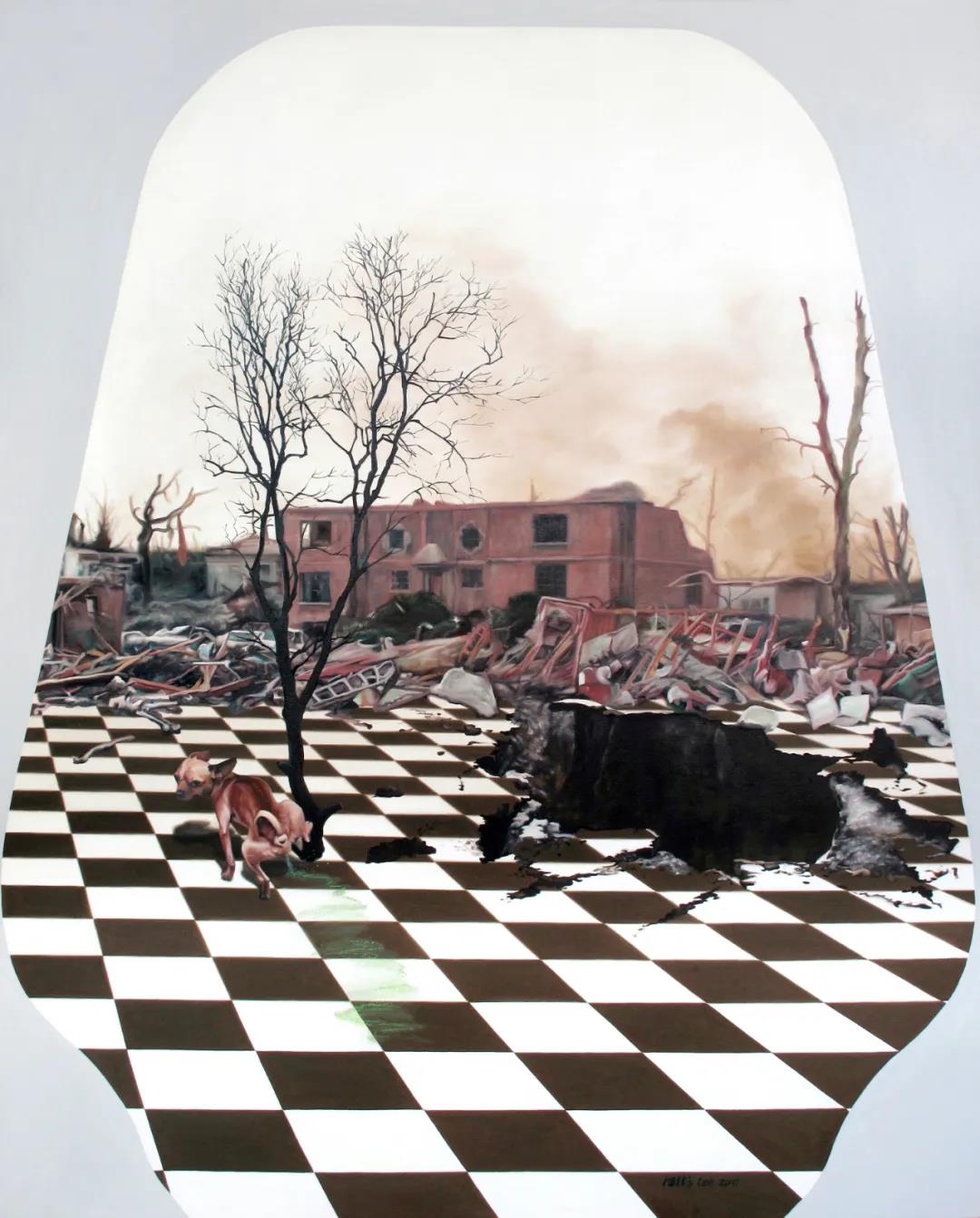
《都市里阳光灿烂--淡绿》 160x200cm 布面油画 2011
2000年前后,李旭彬开始有意识的独立艺术创作,据他回忆:“那时候一位前辈引领我参加广东省一个竞赛性质的水彩画展,为了参选,开始了第一张水彩画的创作,后来在大学里断断续续的做了一些小创作,到大三以后开始了第一幅油画的创作,当时画的是马赛克化的公路上的人行天桥,也许正是因为这张画才有我专业从事创作的开始。”也就是说,象征都市文明的“人行天桥”奠定了李旭彬艺术创作的基调——与都市有关,自此以后,围绕都市,李旭彬创作颇丰。
Around 2000, Li Xubin began to consciously independent artistic creation, according to his recollection: "At that time, a senior led me to participate in a competitive watercolor exhibition in Guangdong Province, In order to participate, I began the creation of the first watercolor painting, then in the university I did some small creations intermittently, I began the creation of the first oil painting after my junior year, It was a mosaic of footbridge on the highway, perhaps it was because of this painting that I began to specialize in creation." That is to say, the symbol of urban civilization "footbridge" set the tone of Li Xubin's artistic creation - related to the city, since then, around the city, Li Xubin has created quite a lot.
李旭彬的艺术创作,有着较为清晰的时间线,2008年前是《与我的记忆有关》系列,2009年是《大风景》、《何去何从》系列,2010年——2013年是《都市里阳光灿烂》系列,2013年——2015年是《球桌》系列,2016——至今是《局部范围》、《光照》系列。
Li Xubin's art creation, has a clear time line, before 2008 is Related to My Memory series, 2009 is Big Scenery, Where to Go series, 2010-2013 is The City of Sunshine series, 2013-2015 is Ball Table series, 2016-up to now is Local Scope, Light series.
《与我的记忆有关》系列作品,可以视为李旭彬的艺术创作探索阶段,即尝试将生命体验与艺术语言、作品风格结合起来。在这一系列中,李旭彬将代表童年记忆的游戏场景、动物等元素置于云端之上,带有明显的意识流特征,人的姿态和云的姿态是漂浮的、流动的、梦幻的,这也许是艺术家进入城市生活之后无所适从的情绪、心理外化表现,通过对童年记忆熟悉之物的回忆与整理,来刻画“我”的存在状态。
Relating to My Memory series works can be regarded as Li Xubin's art creation exploration stage, that is, trying to combine life experience with art language and style. In this series, Li Xubin put the game scenes, animals and other elements representing childhood memories on the cloud, with obvious stream of consciousness features, the human posture and cloud posture are floating, flowing, dreamlike, this may be the emotional and psychological externalization of the artist after entering the city life, through the recollection and arrangement of familiar things in childhood memory, to describe the state of being of "I".
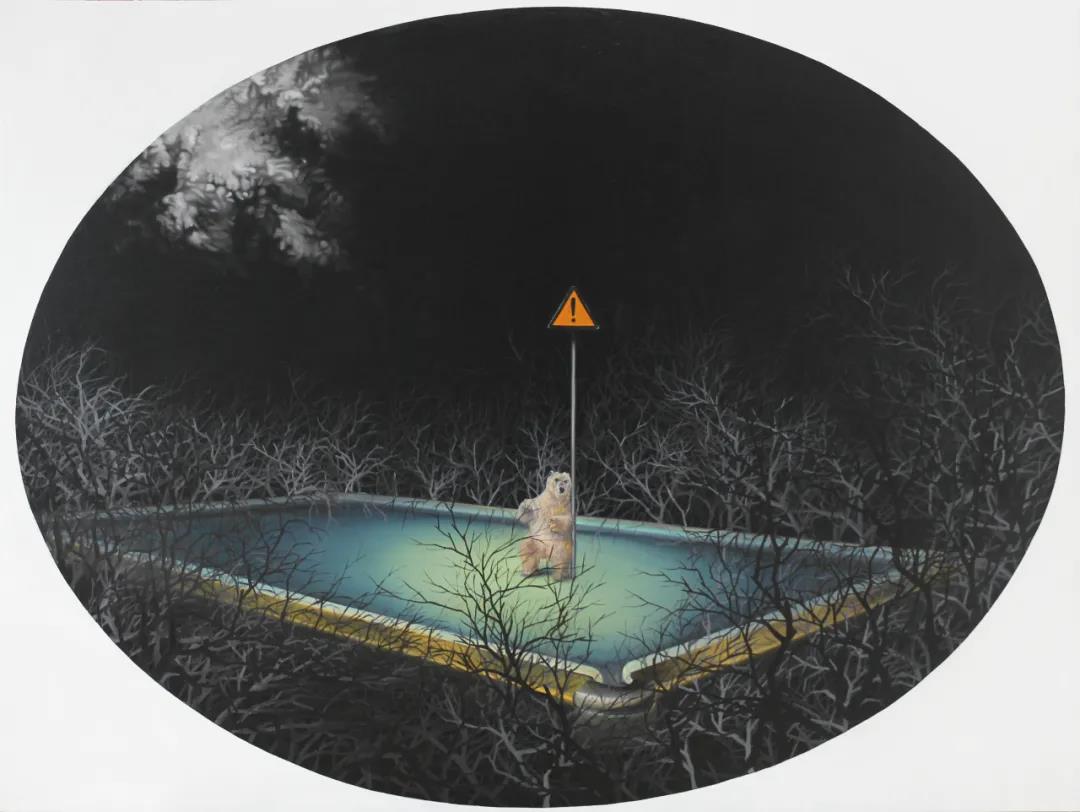
《赖以生存的游戏》200x150cm 布面油画 2014
2009年的《大风景》、《何去何从》系列,是艺术家经由强烈的外部刺激后自然的描述。众所周知,2008年发生了汶川大地震和金融危机,灾难过后的残垣断壁、废墟场景,促使李旭彬重新思考“自我”与“他者”之间的关系。《大风景》、《何去何从》描绘了艺术家眼见为实后对于人与都市、人与自然、人与灾难的思考。他戏剧性的将都市地标建筑物等元素与灾难性场景结合,背景处理的波谲云诡,呈现出波澜壮阔的带有某种预言性质的末日景观,何去何从的追问,带有了行而上学的哲学意义。李旭彬由对“我”的生命体验的思考,上升到对于人类文明共同体未来性的担忧与虚构的预设,进入一种更广阔的叙事语境,他不再纠结于情绪的外露与久居都市的无所适从,尽管这种状态一直存在,而是重新审视“生命体验”与“生命存在”之间的关系。
The 2009 Great Scenery, Where to Go series, is the artist's natural description through intense external stimulation. As we all know, the 2008 Wenchuan earthquake and financial crisis, the ruins after the disaster, the scene of ruins, led Li Xubin to rethink the relationship between "self" and "other". Great Scenery and Where to Go depict the artist's reflection on man and city, man and nature, man and disaster. His dramatic combination of elements such as urban landmarks and disastrous scenes, and his complicated background processing, presents a magnificent apocalyptic landscape with some prophetic nature, the question of where to go, with the philosophical significance of metaphysics. Li Xubin has gone from thinking about the life experience of "I", to worrying about the future nature of human civilization community and the presupposition of fiction, and enters into a broader narrative context. He is no longer obsessed with the exposition of emotion and the inadequacy of long-lived city, although this state has always existed, but re-examines the relationship between "life experience" and "life existence".
当李旭彬进入更广阔的叙事语境后,开始深入思考日常与自我之间的关系,于是创作了《都市里阳光灿烂》系列。此系列不再描绘全景式的视觉解构,而是通过细节性的、片段式的描绘,不以悲观的、消极的,也不以粉饰的、积极的心态去创作,而是以艺术家自认为的客观性去诉说,有点类似于电影艺术中的旁白。代表欲望的火山喷发、龟裂的大地、完整的或者黑洞化的马赛克地板、一隅的墙壁与各种姿态的动物形象并置,完全抽离了“人”的形象的存在。
When Li Xubin entered the broader narrative context, he began to think deeply about the relationship between daily life and self, and created a series of The City of Sunshine. This series no longer depicts panoramic visual deconstruction, but through detailed, piecemeal depiction, not pessimistic, negative, nor whitewash, or positive mentality to create, but with the artist's self-perceived objectivity to tell, a bit similar to the narration in film art. A volcanic eruption representing desire, a cracked earth, a complete or black-hole mosaic floor, a corner of the wall juxtaposed with an animal image of various postures, completely removed from the existence of the "human" image.
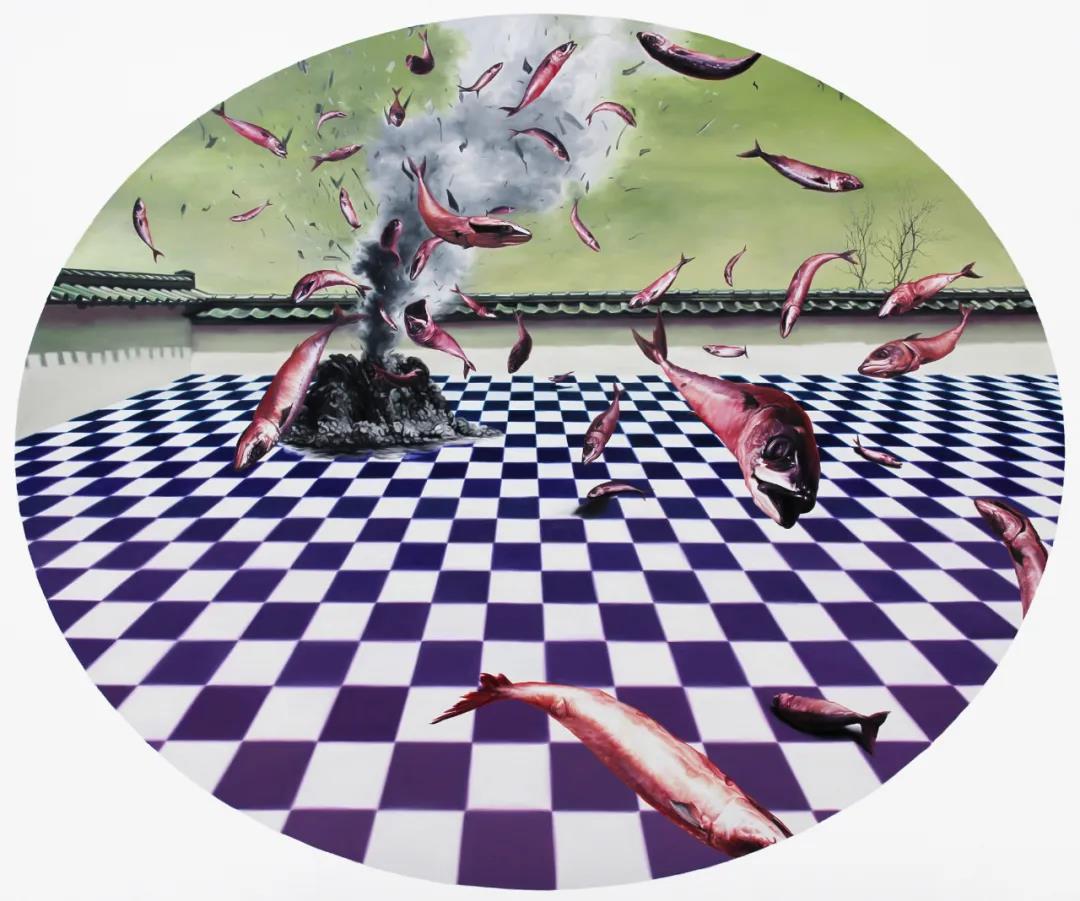
《异镜》240x200cm 布面油画 2012
《球桌》系列可以视为李旭彬的代表性作品。此阶段的创作,可以看出李旭彬的创作逐渐由豪放热烈转向内敛、含蓄。换句话说,他将宏大的画面背景置换为浓缩的、微观的球桌。经过压缩、抽离、提炼,球桌不仅代表了某种规则秩序,更是经过艺术家的延伸,上升为法则的高度。球桌是一种隐喻,代表了世间万物运行的法则。关于法则,李旭彬如是说:“我在创作《都市》系列时,有一种感觉就是都市里的一切充斥着人为的痕迹,就像路边的绿植花卉,无不经过人工雕琢,可以说这个第二自然里渗透了太多的‘人工’。人们用自己的欲望去肆意拨弄和改造生命,终究难以逃脱自然法则的制约。这跟人们玩游戏差不多。‘球桌’只是提供一个‘游戏’平台而已,玩的人可以有各自的玩法规则,不过,游戏始终受到平台的基本形态法则制约,都市的发展要在一定的自然法则下进行才能长久。”
Ball Table series can be regarded as Li Xubin's representative works. In this stage of creation, we can see that Li Xubin's creation gradually changed from bold and unrestrained to introverted and implicit. In other words, he replaced the big picture background with a condensed, microscopic ball table. After compression, extraction, refining, the ball table not only represents a certain rule order, but also through the extension of the artist, rising to the height of the law. The ball table is a metaphor that represents the laws of all things in the world. As for the law, Li Xubin said: "When I create the series of City, there is a feeling that the everything in the city is full of man-made traces, just like the roadside green flowers, all have been hand-carved, it can be said that this second natural infiltration of too much 'man-made'. It is difficult for people to escape from the laws of nature after using their own desires to pry and transform life. It's almost like people playing games. "Ball table" just provides a "game" platform, players can have their own rules of play, however, the game is always limited by the basic form of the platform rules, the development of the city must be carried out under certain natural laws in order to last for a long time."
《局部范围》系列延续使用前几个创作系列的画面视觉元素,布局多采取“圆”的形式,画面秩序更加趋于理性。李旭彬“以小搏大”、“管中窥豹”,用更冷静、更客观的状态通过局部范围的描述,将他对都市语境下文化的想象刻画出来,颇有“芥子纳须弥”的意味。在李旭彬的“情景塑造”中,自然秩序、心理秩序、都市秩序相互融合,不动声色的将观者引入李旭彬的艺术世界中。
Local scope series continue to use the visual elements of the previous creative series, the layout mostly take the form of "circle", the picture order is more rational. Li Xubin "multum in parvo", "look at a leopard through a tube", with a more calm, more objective state through the local scope of the description, to depict his imagination of culture in the urban context, quite have a "the tiny mustard seeds can hold the huge Mount Sumeru" meaning. In Li Xubin's "Scene Shaping", the natural order, psychological order and urban order merge with each other and introduce the viewer into Li Xubin's art world.
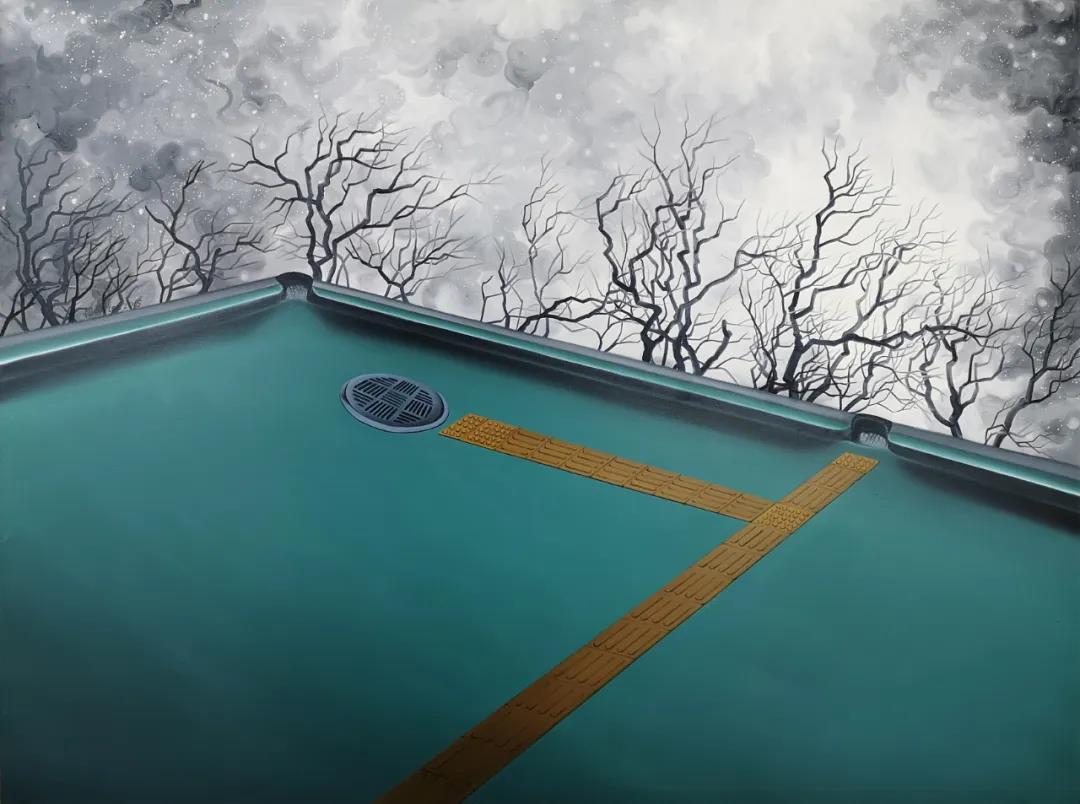
《盲人道》160x120cm 布面油画 2015
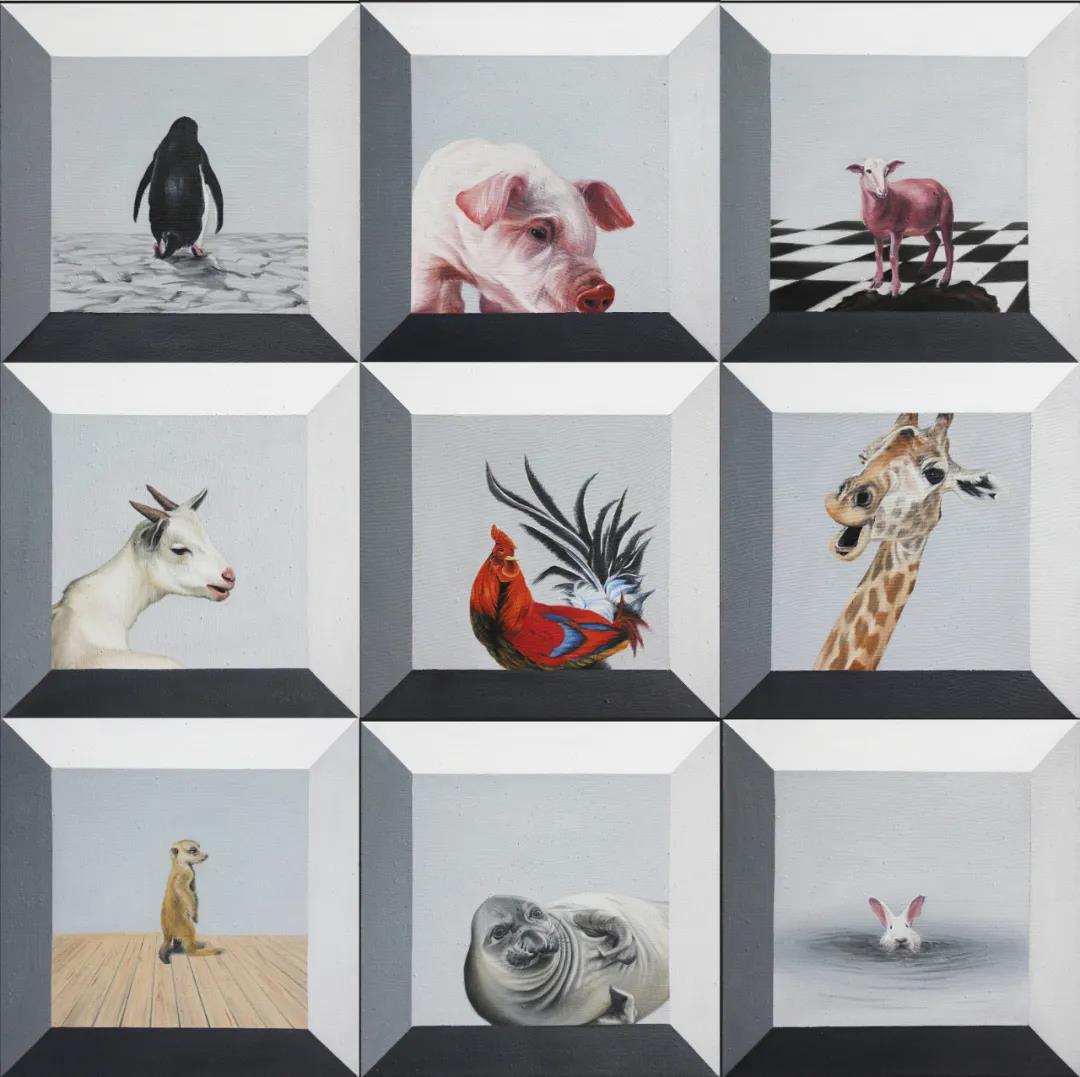
《看过来》120x120cm 布面油画 2016
李旭彬的艺术创作,以真实的肉身经验、“冷眼旁观”的视角、剧场化的场景介入到都市文化中。这种介入,带有双重意味,首先,李旭彬追随内心的多重感受,将情绪抽离和转译,以理性化的方式塑造了作品的“窥视感”,这也是众多描绘城市化题材艺术家的重要创作表征;其次,李旭彬以“肉身的融入、精神的游离”来寻找失落的家园,作品中呈现的秩序与无序、规则与法则甚至生存与毁灭等,以感性化的方式探究城市化文本,隐晦的、不动声色的传达出价值取向。美国作家雅克布斯在《美国大城市的生与死》中提到,现代主义所创造的都市空间虽然在物质方面整洁有序,但在社会和精神方面却是没有生命力的。第三,李旭彬的艺术带有“循序渐进”的创作美学特征,通过时间线索下的创作梳理分析,先是通过描述“情绪化”,进而描述“情感化”,接着追问和探究都市化语境下的“存在问题”,这样的创作逻辑线索符合李旭彬的都市体验,因而生活鲜活。所以,艺术家对于都市空间内生命存在的追究与探索,带有普世价值意义上的人文关怀与温暖,赋予了艺术创作在都市空间内的诉诸艺术观念的合法性。
Li Xubin's artistic creation, with the real physical experience, the "look on coldly" angle of view, theater-based scene got involved in the urban culture. This kind of intervention, with double meaning, first of all, Li Xubin followed the multiple feelings of the heart, took the emotion away and translated, and shaped the "peeping feeling" of the works in a rational way, which is also an important representation of many artists who depict the subject matter of urbanization; secondly, Li Xubin searched for the lost home with "the integration of the body and the freedom of the spirit", the order and disorder, the rules and rules and even the survival and destruction and so on which were presented in the works. exploring the urbanized text in a perceptual way, implicitly and tacitly conveys the value orientation. As the American writer Jacques Booth points out in The Life and Death of America's Big Cities, the urban space created by modernism is physically neat and orderly, but socially and spiritually lifeless. The third, Li Xubin's art with "step by step" creative aesthetic characteristics, through the analysis of creation under the clue of time, first through the description of "sentimental", then describe "emotional", and then ask and explore the urban context of "existing problems", such creative logic clues in line with Li Xubin's urban experience, so life is fresh. Therefore, the artist's investigation and exploration of the existence of life in the urban space, with the humanistic care and warmth in the sense of universal value, endows the art creation with the legitimacy of the concept of appeal to art in the urban space.
尽管都市化带给人们的心理感受具有某种程度的共同性,但作为独立的生命个体,对于都市生活的感触却是独一无二的。李旭彬少年时代即进入城市生活,“无所适从”的心理感知一直贯穿,从表面看,这是都市人对于融入城市生活某种纠结的、挣扎的肉身经验的焦虑性选择障碍,实际上是对于两种甚至是多种即都市文化与乡土文化之间的碰撞、杂糅之后的文化思考,我们既享受了都市文化的便捷又对乡土文化念念不忘,也就是说,在都市中,肉体的存在与精神的搁置是割裂的。所以,李旭彬的艺术创作,试图在肉体存在与精神搁置中找寻平衡点。
Although the psychological feeling brought by urbanization has a certain degree of commonality, as an independent individual, the feeling of urban life is unique. When Li Xubin was a teenager, he entered the city life. The psychological perception of "confusion" runs through. On the surface, it is the anxiety choice obstacle of urbanites to some kind of tangled and struggling physical experience in the city life. In fact, it is the collision between two or more kinds of urban culture and local culture. After the combination of cultural thinking, we enjoy both the convenience of urban culture and the nostalgia of local culture, that is to say, In the city, the existence of the physical is separated from the shelving of the spirit. Therefore, Li Xubin's artistic creation tries to find the balance between the physical existence and the spiritual shelving.
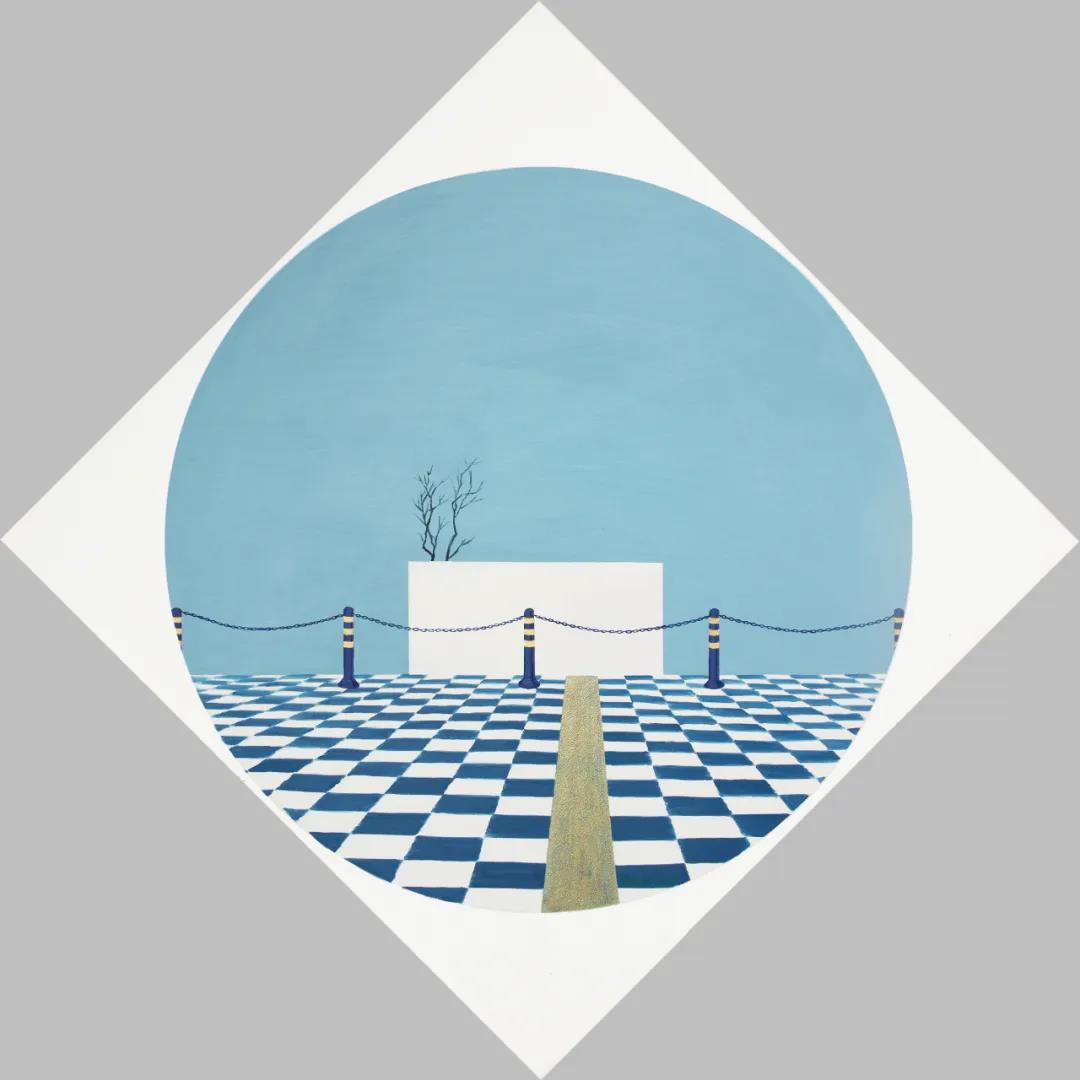
《局部范围·拦》100x100cm 布面油画 2017
李旭彬的作品,有一种“画面主角的非在场性”美学特征。他建立的画面视觉系统,逐步抽离了人物形象的存在,魔幻的是,透过画面氛围的营造、结构的设置,始终感觉有人在画面之外冷眼旁观,不带感情色彩的窥视,这种窥视,构成了李旭彬作品中形而上的文化思索与价值取向,也就是艺术家所说的那样,日常被抽离并有意的安排在某个特定的环境下,又将触发观者重新的认识及思考,甚至被赋予了全新的阐释。
In Li Xubin's works, there are aesthetic features of "the non-presence of the protagonist in the picture". He built the visual system of the picture, gradually removed from the existence of the image, the magic thing is that through the creation of the atmosphere of the picture, the setting of the structure, always feel someone is watching the scene coldly, without emotional color of peeping, this kind of peep, constitute Li Xubin's works of metaphysical cultural thinking and value orientation, that is what the artist said, daily being pulled away and deliberately arranged in a specific environment, it will trigger the viewer's re-understanding and thinking, and even be given a new interpretation.
通过对各种日常之物的挪用、并置、再造、重构,李旭彬形成了一套梦境的、剧场化的视觉修辞。他的剧场化场景描绘,在《大风景》、《何去何从》系列之后,由都市的宏观转向了都市的微观,如场景的一隅或者局部范围的塑造,这样的处理方式,增加了空间的紧张感与逼仄感,作品中莫可名状的叙事性以及符号的指涉意义,甚至是有意为之的设计感,都在表明李旭彬从经验与直觉出发,构建了反乌托邦性质的剧场化场景,带有耐人寻味的“城市寓言”意味。
Through the misappropriation, juxtaposition, reinventing and reconstruction of various everyday objects, Li Xubin formed a set of dreamlike, theatrical visual rhetoric. His theatrical scene depiction, after the Great Scenery and Where to Go series, turns from the macro of the city to the micro of the city, such as the molding of a corner or part of the scene, which increases the tension and the sense of tightness in the space, the indescribable narrative in the works, the reference meaning of the symbols, and even the design sense of the intention, all show that Li Xubin starts from the experience and intuition, construct the theater scene of dystopian nature, with intriguing "city fable" meaning.
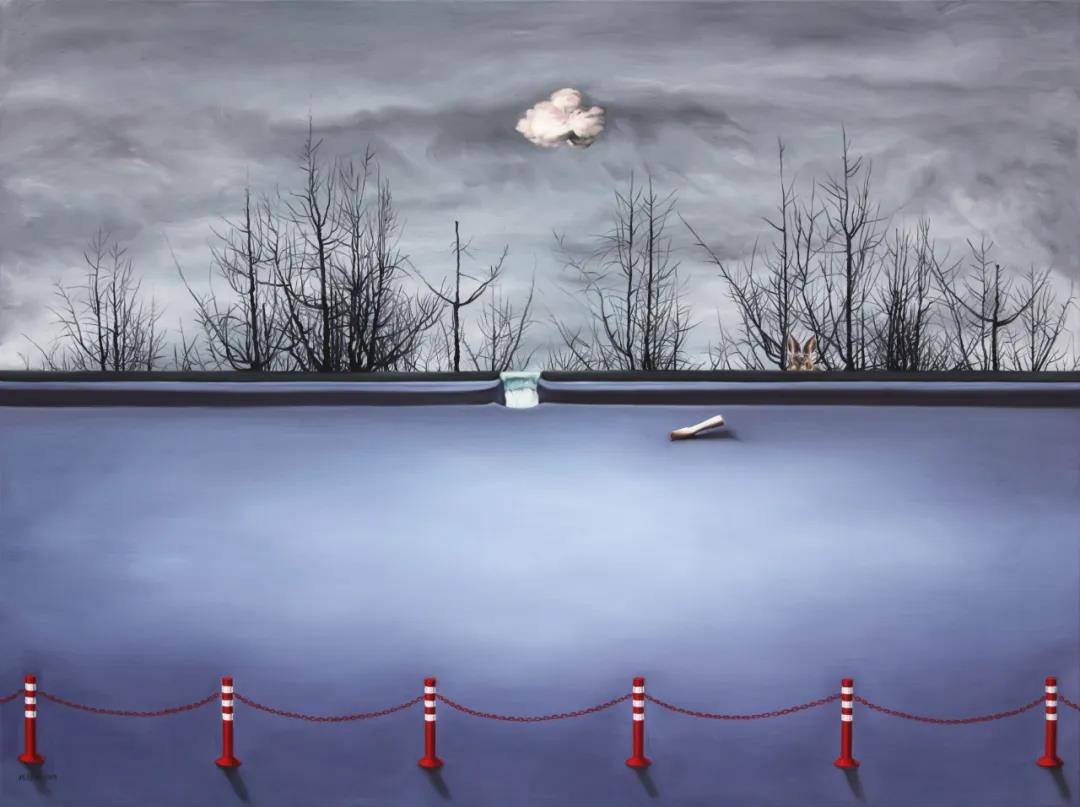
《窥探的兔子》200x150cm 布面油画 2013
此次个展“窥探的兔子”,是李旭彬从艺多年以来真正意义上的个展,言及原因,李旭彬谦虚的表示其实有香港、广东、深圳等地的艺术机构都找过他想为其办个展,但其认为艺术创作还没有完全形成自己理想中的状态与高度,李旭彬以一颗艺术热忱之心,不断与自己较劲,从个体的存在出发,从生活的现实世界出发,重构了生命的场域,却又真实的描绘了都市化浪潮中灵魂无处安放的状态,都市化带给我们多少便捷就会掠走多少想象。根据哲学家弗洛伊德的观点,独立的人格结构由本我、自我、超我构成,在李旭彬的创作中,久居城市的无所适从构成了本我,无所适从状态下我的存在以及围绕在此存在状态下所作的实践构成了自我认知以及找寻自我的过程,对于都市化的终极追问、对人文理想的关照则映射了李旭彬的超我。在我看来,李旭彬以及我们正如他画笔下那一只窥探的兔子,窥探的兔子隐喻着人格结构的存在,虽然在复杂的现实语境下卑微的生存着,却也有一颗强大的内心,不断的适应甚至试图改造精神的栖息地,小心翼翼的将自己隐藏起来,“跳出三界外、不在五行中”的存在状态显然使得艺术家观察的更明了,思考的更深入——在丑陋的现实世界中发现美,在容纳了现实世界一切的时空中,存在着我们对于真理的追求与理想,用想象力让美呈现在我们的面前。
This exhibition "exploratory rabbit", is Li Xubin’s solo exhibition in the true sense for these years, Mention the reasons, Li Xubin modesty said that there are Hong Kong, Guangdong, Shenzhen and other places of the art institutions have been looking for him to hold a solo exhibition, but he thought that art creation has not yet fully formed his ideal state and height, Li Xubin with an artistic zeal heart, and constantly struggle with himself, from the individual existence, and the real world of life, reconstruct the field of life, but at the same time truly describe the state of no place for the soul in the wave of urbanization, which will take away the imagination as much as it is convenient for us. According to the philosopher Freud's point of view, the independent personality structure consists of Id, Ego, and Superego. In Li Xubin's works, the inadequacy of living in the city makes up Id, self-existence and the practice around it constitute the process of ego-cognition and ego-search, and the ultimate questioning of urbanization and the care of humanistic ideal reflect Li Xubin's Superego. In my opinion, Li Xubin and us are just like the exploratory rabbit under his brush, the exploratory rabbit is metaphorical to the existence of personality structure, although living humbly in the complicated realistic context, but also has a strong heart, constantly adapting and even trying to transform the spiritual habitat, carefully concealing himself, "Jumping out of Three Dimensions, Staying outside Five Elements" of the existence state obviously makes the artist to observe more clearly, deeper thinking: finding beauty in the ugly real world, in the space-time which contains all the real world, there is our pursuit of truth and ideals, to present the beauty in front of us with the imagination.
内容合作:
电话:18665691921/020—87381688
联系人:汤小姐 邮箱:2305366233@qq.com
地址:广州市越秀区广州大道中289号南方传媒大厦

